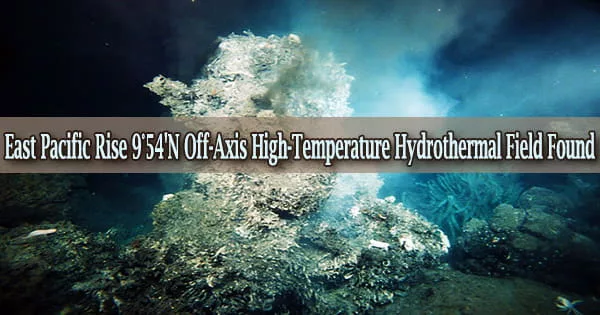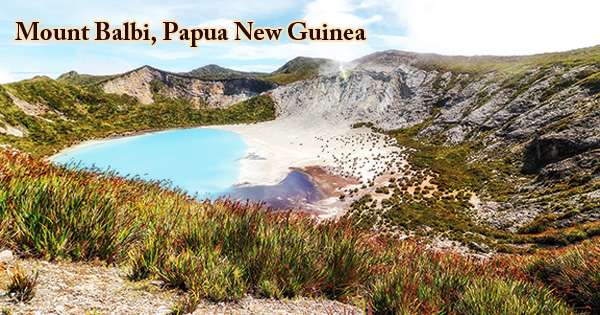The research, which was led by the McDermott lab at Lehigh, shows that there are more hydrothermal vents in the deep water than previously believed and highlights the necessity of bathymetric mapping to find them.
The discovery of a fresh, high-temperature, off-axis hydrothermal vent field on the Pacific Ocean’s floor at a depth of 2,550 meters may alter how scientists perceive the influence that such ocean-floor vent systems have on the biology and chemistry of the planet’s seas.
The off-axis hydrothermal field, known as YBW-Sentry, was found by a team of researchers led by Jill McDermott, a chemical oceanographer and faculty member at Lehigh’s Department of Earth and Environmental Sciences. It is located near the East Pacific Rise, a global mid-ocean ridge.
About 200 miles off the western Mexican coast is where the study area is located. The new vent location is nearly twice as large as the closest active hydrothermal vents in the area, with an area roughly equal to a football field. The chimneys are the height of a three-story building and resemble candelabras.
Discovering Active Off-Axis Hydrothermal Vents at 9° 54’N the East Pacific Rise,” an article containing the findings was published in the Proceedings of the National Academy of Sciences today (PNAS).
Deep-sea hydrothermal vents can be found all over the world, most frequently at the crest of the global mid-ocean ridge system in volcanically active regions. The fragile tectonic plates that makeup Earth’s crust are divided by magmatic activity, which is fueled by heat upwellings in the mantle.
New seafloor rock is created as a result of volcanic eruptions and magmatic activity as the plates move apart. Sea water seeps into crustal rocks through fissures produced by this magmatic and tectonic activity. Hydrothermal vents spew mineral-rich liquid that has been heated beneath the seafloor, similar to hot springs on land.
The McDermott lab at Lehigh was in charge of the study that resulted in the identification of the off-axis vent field along the East Pacific Rise. The group gathers fluids from the chimneys of black smokers and examines them for geochemical traits that can reveal the temperatures at which the fluids are generated.
We were astounded that not only was the field very active, but it is larger in area and hotter in origin temperature than any other hydrothermal vent field known along this portion of the East Pacific Rise that has been studied for the past 30 years.
Daniel J. Fornari
Higher temperatures might be a precursor to an eruption. The team additionally equips the active vent chimneys with fluid temperature loggers that record their own data in order to provide measurements every 10 minutes over a two-year period.
The temperature readings offer a timeline of the alterations the vents go through. Nine vents in the study region have been instrumented by the research team.
According to Ross Parnell-Turner, a geophysicist at Scripps Institution of Oceanography in California and a co-author of the paper, near-bottom bathymetric surveys carried out by the research team between 2018 and 2021 with the autonomous underwater vehicle (AUV) Sentry, provided by Woods Hole Oceanographic Institution’s (WHOI) National Deep Submergence Facility, produced the high-resolution (1 meter) maps that resolve very small seafloor features.
“We identified an off-axis field of tall pinnacles, and we assumed that they were either older volcanic spires or inactive hydrothermal chimneys deposited long ago,” says Parnell-Turner.
Daniel J. Fornari, a marine geologist at WHOI and a co-author of the paper noted, “We were astounded that not only was the field very active, but it is larger in area and hotter in origin temperature than any other hydrothermal vent field known along this portion of the East Pacific Rise that has been studied for the past 30 years.”
McDermott claims that over the past 15 years, the high-resolution images created by autonomous underwater vehicles have completely changed how scientists study and sample the bottom.
The scale of the maps produced by the AUV sonars is comparable to that of the maps produced by advanced land-based geological surveying and mapping methods, such as drone mapping and laser scanning.
“Very few areas in the deep ocean have been mapped at high-resolution using deep submergence technologies,” says Parnell-Turner, co-author. “However, major discoveries can be made by collecting near-bottom bathymetry using AUVs.”
The trough that serves as the axis and location of the majority of the volcanic eruptions along the East Pacific Rise has historically been the main focus of the hunt for active hydrothermal vents. For the past three years, the team has been employing the NDSF’s Sentry AUV to increase the high-resolution map to the west and east of this axial trough, between 9° 45 and 57’N latitude. NDSF is referred to by McDermott as the “NASA of the deep sea.”
“The mapping work provides a detailed picture of the seafloor so that we can monitor and quantify changes that occur when the next volcanic eruption happens along this portion of the East Pacific Rise ridge axis,” says McDermott.
According to co-author Thibaut Barreyre, a geophysicist from the University of Bergen in Norway where two previous eruptions at this location took place in 1991–1992 and again in 2005–2006, the team predicts that the next eruption could take place within the next few years.
“The new vent field may seed recovering hydrothermal ecosystems after volcanic eruptions,” saysSantiago Herrera, a co-author who is a biological oceanographer and faculty member in Lehigh University’s Department of Biological Sciences.
The 3-year research project is funded by the US National Science Foundation’s Ocean Sciences Division, Marine Geology & Geophysics Program.
Additional authors of the PNAS paper include: Connor C. Downing, Kelden Pehr and William S. Dowd in Lehigh’s Department of Earth and Environmental Sciences; Jyun-Nai Wu of Scripps Institution of Oceanography; Nicole C. Pittoors and Samuel A. Vohsen in Lehigh University’s Department of Biological Sciences; and Milena Marjanovićof France’s Institut de Physique du Globe de Paris.
“There is much still left to be discovered about deep-sea vents along the global mid-ocean ridge, both in terms of where they are located as well as their geological, geochemical and biological characteristics,” says McDermott. “I hope our study will motivate future research efforts to target mapping off-axis areas along the global mid-ocean ridge crest to better quantify the extent of off-axis versus on-axis hydrothermal venting.”
















